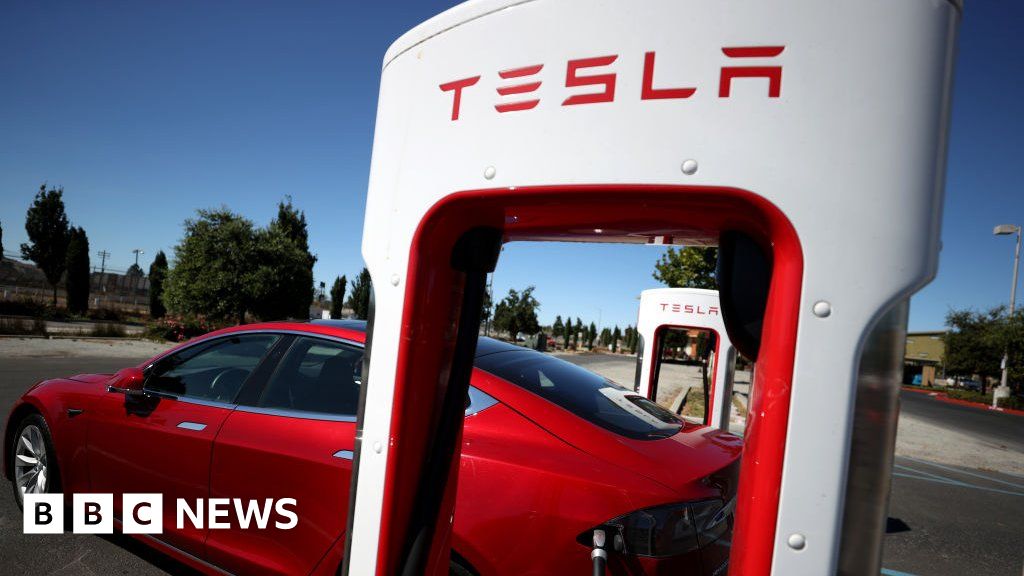- cross-posted to:
- [email protected]
- cross-posted to:
- [email protected]
spoiler
Tesla has fired its entire Supercharger division, staff who worked in the team say.
There are over 50,000 Superchargers globally, the company says, making it the world’s largest fast-charging network for electric vehicles.
Boss Elon Musk said the firm would cut one in ten jobs, as it faces strong competition from less expensive rivals.
It needed to be “absolutely hard core” about cost reduction, he wrote in a memo first reported by The Information.
The BBC has approached Tesla for comment,
Multiple employees have confirmed their departures from the division, which had hundreds of employees.
William Jameson, strategic charging programs lead at Tesla, posted on X that Mr Musk had “let our entire charging org go”.
“What a wild ride it has been”, he wrote.
Also writing on X, Mr Musk said the company still planned to grow the Supercharger network, “just at a slower pace for new locations”.
Andres Pinter, chief executive of Bullet EV Charging Solutions, a supplier to the charging network said that his team “woke up to a sharp kick in the pants this morning,” Reuters reported.
He speculated that Mr Musk could “reconstitute the EV charger team in bigger, badder, more Muskian way” in order to continue to benefit from US government funding to develop the network. ‘Extremely perplexed’
Tesla’s network of chargers is widely seen as industry leading, and recently it cut deals with several rival car-makers in north America to adopt its “NACS” charging standard so that their vehicles could use the network.
Fred Lambert, editor-in-chief of electric vehicle news website Electrek, posted on social media he was “extremely perplexed” by the move.
“If one thing was a clear success at Tesla, it’s the Supercharger network. Even from a talent perspective. No other charging team in the world has been able to do what Tesla did,” he wrote.
The quality and reach of the Supercharger network has long been a huge advantage for Tesla, James Attwood, acting magazine editor of Autocar, told the BBC.
It was “a key selling point for potential buyers” he added.
“But with regulators in both Europe and the US pushing the firm to open the Supercharger network to owners of other electric vehicles, it will offer less of an advantage in the future.”
Last year, seven large car manufacturers including Mercedes, Honda, BMW and Hyundai-Kia set-up a joint venture to build a rival fast-charging network.
As well as the cuts to the Supercharger department, the firm’s entire public policy unit will also be cut the Financial Times reported.
The layoffs come days after the firm reported its first quarterly revenue decline since 2021.
It follows declining sales at the company, which is also having to deal with an investigation into the safety of its Autopilot assisted driving system, and a recall relating to its newest model, Cybertruck.



Power delivery and communication mostly
EV chargers deliver massive amounts of power, far more than what’s delivered by a 120 or 220 socket. You can charge EVs with those but it’s usually used to charge overnight because it takes hours instead of the minutes needed for a proper fast charger
You also need to have the car handshake with the charger to know how much power to draw and when to stop, because not every EV on the same charging standard accepts the same power draw, so in addition to the h u g e power phase and ground pins in the connectors you’ve also got a pin dedicated to talking to the charger to allow it to function properly
Technology Connections on YouTube has tons of videos on the subject, if you want a deeper and more specific dive
i forgot how wild rapid charging is. thanks, that explains a lot and i will look through those videos. i think EVs/ transportationelectrification is inevitable, but i’m always on the lookout for how i might integrate myself into it without getting caught up in a grift.
like 10 years ago i read a near-futurist/post-carbon article on transportation and they made a convincing case that at best, battery technology is transitional because it still has many of the inefficiency problems associated with hauling around a heavy liquid fuel. to the writers, the solve for personal conveyance are grid connected vehicles that have limited batteries for short duration/distance off-grid travel. the benefit being the huge reduction in non functional / cargo weight. that’s just a small piece of the somewhat short read (14 pages) about the larger looming shifts which are imminent in transportation, mobility, logistics, etc.
Retvrn to trolleybus tradition
We’ve got trolleys in my home town, along with regular buses. Most lines are like 15-20 min apart and the modern vehicles are quite comfy, if a little crowded at peak hour. Wish we would subsidize and make them completely free at point of service. I’m certain that the net road amortization decrease from fewer car rides alone will make up for it.